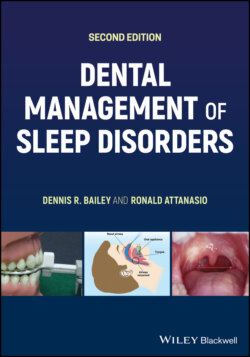Читать книгу Dental Management of Sleep Disorders - Ronald Attanasio - Страница 62
The Hypopharynx
ОглавлениеThis is the area of the airway that is mostly unsupported and is subject to narrowing or collapse and that may be associated with the SRBD. The pharyngeal constrictor muscles function mainly during swallowing (Table 3.4).
There are other muscles that need to be considered that involve mandibular function as well as the cervical spine. These muscles play a role in positioning of the mandible and the head and assist with maintaining the airway in the awake state and during sleep. The muscles that need to be considered are the Masseters, the Temporalis, and the Pterygoids, both lateral and medical. The muscles of the neck, both anterior and posterior, also need to be considered because they control head and neck position, and this in turn may have an impact on the airway. As an example, consider the principles of CPR as it relates to head position.
The two main muscles of the neck that are important, particularly with respiration, are the SCMs and the scalenes [11]. The SCMs and scalenes are considered accessory muscles to respiration. The primary purpose of the SCMs is to rotate and tilt the head as well as to cause flexion of the head. They also act as accessory muscles of respiration by elevating the sternum. The scalenes cause lateral flexion of the neck, and the anterior scalene specifically elevates the first rib and with respiration stabilizes the upper ribs.
The primary muscles of respiration during inspiration are the diaphragm and the external intercostals. During expiration the abdominal muscles and the internal intercostals are active.
